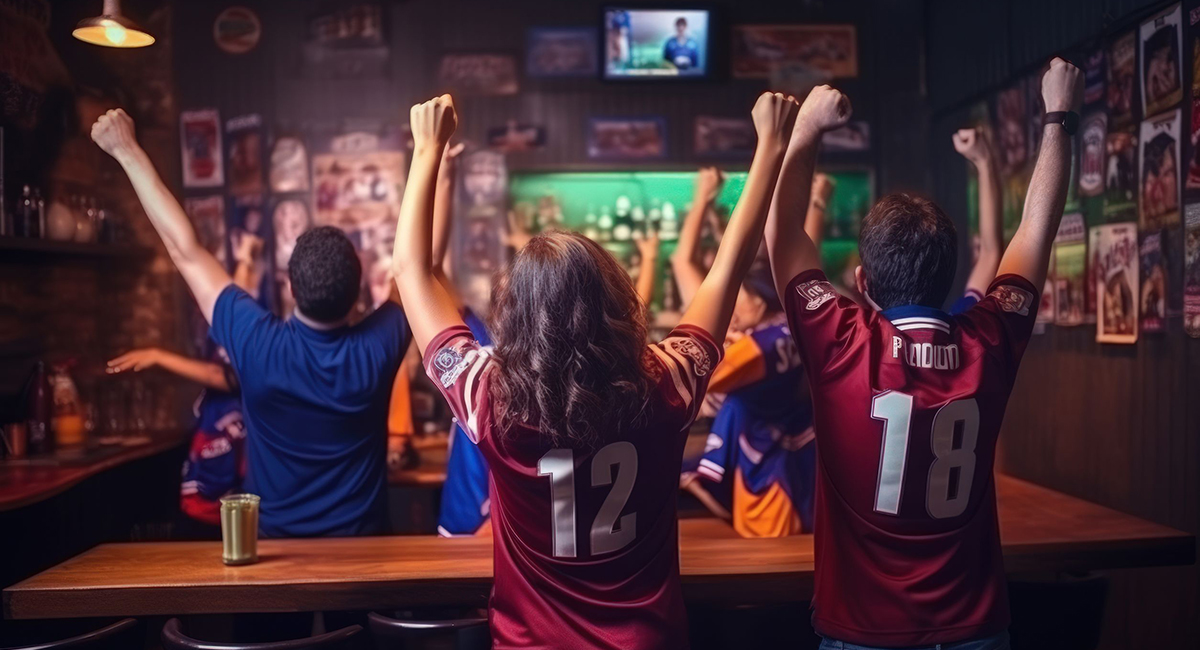We are approaching the beginning of the two most important months in athletics in a sports-crazed nation.
Between now, approaching February 11’s Super Bowl—where even speculation about the appearance of one of the player’s girlfriend is generating huge attention—in Las Vegas and April 8’s National Collegiate Athletics Association (NCAA) Basketball Championship game in Phoenix, Americans will be obsessively watching TV, drinking beer, and devouring pizza while observing young men’s prowess in moving balls in a manner generating great excitement.
Therefore, this is a good time to reflect upon the role that sports should play in collegiate America, briefly enumerating five problems with the status quo and hinting at some potential changes.
First, the perception that college athletes are pursuing a dual role of seriously pursuing a degree and secondarily demonstrating their ballplaying prowess has gone from being tenuous to being almost completely fictitious. Therefore, why don’t we formally separate the two?
For example, why don’t we recognize reality and make existing college teams into farm clubs for the NBA and NFL? Colleges could make huge amounts selling the naming rights to their teams. Oxford University, the University of Toronto, and leading Chinese universities eke out a good existence without high-profile college teams, so why can’t Stanford or Ohio State? The “transfer portal” option now leads to players playing for two to three different universities over four years.
Second, we have only halfheartedly dealt with a huge moral issue—the financial exploitation of young men and some women by grown adults. Nick Saban retired from the University of Alabama making $11 million a year, while, until a few years ago, his players who actually made the Crimson Tide achieve football nirvana, were paid a fraction of one percent of that amount. The name, image, and likeness (NIL) rules have now given players some real income, but the best of them still receive a small fraction of what their pay would be in a competitive labor market. Middle-aged men are viciously exploiting these players—economic child molestation. A star college quarterback still receives a smaller percentage of a competitive market wage today than slaves typically received nearly two centuries ago.
Third, schools have formed “conferences” that have reached monstrous size, including teams that are geographically literally thousands of miles apart. The Big Ten, once a conference of 10 midwestern schools, now stretches from near the Atlantic Ocean—the University of Maryland and Rutgers—to Washington and the University of Southern California near the Pacific Ocean. Does it make sense to have perhaps 100 players and coaches travel from Seattle or Los Angeles to a suburb of Washington, D.C. to spend less than three hours playing a game with a ball? Who is going to foot the bill?
Fourth, there is growing medical evidence that college sports sometimes have long-term adverse health consequences. Are we adequately providing for those future medical expenses? I think not.
Fifth, by any rational and complete accounting, almost all universities lose money on intercollegiate athletics, and at some schools, like the one at which I am associated, an honest accounting—including things usually neglected, like depreciation on the stadium and basketball arena—would put those losses at $20 million or more annually—roughly $1,000 for every student on campus. At a time of falling enrollments and increased financial strain at many schools, is this something that we can afford? Is it fair to students, many of whom are far less enthusiastic about the football team than adult fans? At a time when many Americans are increasingly questioning more public support for colleges, does the additional cost of subsidizing athletic teams make sense?
I think a strong case can be made for having college students engaged in physical activities, participating in team intramural sports where they improve their health and often learn some leadership skills, the value of teamwork, and the need for discipline fostered by a competitive environment. Teams can also help create a sense of university community and identity.
College sports are governed by two laws. First, the Iron Law—every time someone wins a game, someone else loses. The national aggregate win-loss record of all college teams is .500–50 percent of games are won; 50 percent are lost. Not everyone can be a champion. Second, the Law of Diminishing Returns applies to sports as it does to almost everything else in life. Modest amounts of resources devoted to it can be productive and worthwhile, but vast expansion of spending—indoor practice facilities, 10 coaches instead of a couple—raises costs relative to benefits. Let’s enjoy the Super Bowl and, a few weeks later, March Madness. But remember, there is no such thing as a free lunch—or free football or basketball game.













